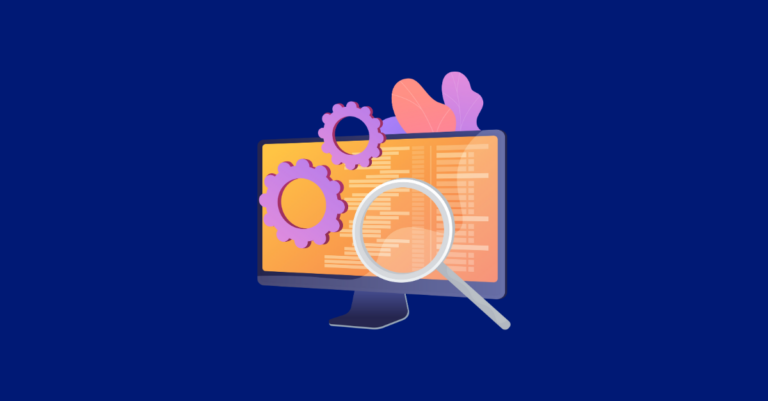How to Create a User Persona: A 7-Step Template & Questionnaire
A user persona (sometimes called a “buyer” persona) is a fictional representation of your ideal customer. It is built using real data, insights from existing customers, and market research to create a profile of the people your business wants to target.
By understanding your ideal customers — their backgrounds, goals, challenges, and behaviors — you can craft messaging and campaigns that truly resonate with the target audience you want to reach.
But where do you start? Let’s walk through the key steps to creating detailed user personas for your branding and marketing.
Step 1: Gather Data About Your Existing Customers or Clients
If your brand has been around for at least a few years, there’s probably a treasure trove of information about your ideal customers floating on corporate drives or in the minds of long-term employees. However, it’s not uncommon for these customer or client details to never be formally documented.
However, having a record of all your customers’ motivations, challenges, and demographics can serve as a powerful resource for your marketing efforts. Whether you’re handling everything in-house or especially if you’re working with third-party vendors, these vital reference pieces ensure every campaign you execute is targeted.
Compiling the Existing
Your personas should be rooted in real user or company experience data. Use your existing tools to gain insights about your customers or clients.
Some great tools and resources for gathering demographic and behavioral information on your audience include:
- Google SEO products like Google Analytics, Search Console, Ads, etc.
- Reviews from customers or clients online
- Social media
- Case studies
- Past interviews or customer feedback surveys/polls
- Market trends and data
You can even see how similar industries or brands document their user data for directional purposes. If they’ve created or referenced polls, case studies, or other external sources, these are great assets to review.
Uncovering Undocumented Knowledge
After finding documentation on company storage drives or online about your audiences, your quest only continues. Some long-term employees store a wealth of knowledge about your customers and clients rent-free in their minds. We suggest scheduling some time with your team’s best brains and asking them questions about your customers and clients. Or, having them fill out questionnaires or surveys you send their way, like this Creating User Personas Questionnaire.
Step 2: Define Your First Persona’s Identity
To start, give your user persona a name and a role. This humanizes the profile and makes it easier for your team to relate to the persona as a real person.
- Name: Choose something representative (ex., “Marketing Manager Mike” or “Startup Founder Sarah”)
- Role/Industry: Define their job title and the industry they work in.
- Demographics: Include details like age, gender (if relevant), location, and education level.
- Persona Image: Use a real customer photo (with permission) or a carefully selected stock image that aligns with the persona’s traits and lifestyle.
Step 3: Identify The User Persona’s Background
A well-developed persona goes beyond surface-level details. Consider:
- Career Path: What past roles have they held? What got them to the position they hold today?
- Personal History: Did something happen that shaped this personality?
- Context: Any details that paint the picture of how their background influences their current relationship with your brand.
- Interests: What does this persona like in their professional or personal life? Sometimes it helps to start with what they don’t like and think about the opposite.
Step 4: List The Persona’s Goals
Part of your job is to help your target audience achieve their goals, so it makes sense to clearly define them.
- Professional Goals: What are they trying to achieve? Are they looking for business growth, efficiency, trying to hit specific KPIs with your business, etc.?
- Personal Goals: Consider the type of personal goals that they may set too if relevant for painting the picture of them as a person and the things they care about. For example, if they are training to run a ½ marathon and enjoy incremental progress in this part of their lifestyle, maybe they are also better suited for projects broken down into parts with achievable milestones along the way instead of pitching a huge goal all at once.
Step 5: Understand Their Challenges & Pain Points
One of the most valuable aspects of creating a persona is identifying the obstacles they face. Ask questions like:
- What problems do they encounter in their work?
- What frustrations do they have with current solutions?
- What concerns might they have about working with your company?
Determine Common Objections
Your persona should also include any potential objections they might have about your product or service. These could be related to pricing, trust, implementation difficulties, or comparisons to competitors.
Step 6: Address Their Fears & Motivations
Understanding what drives your user persona’s decisions can help tailor your messaging.
- What do they fear from your product or service or a similar one?
- What do they fear from your brand or a similar one?
- Are they more motivated by fear (avoiding failure, risk) or by growth (achievement, success)?
- What other hesitations do they have before making a purchase or commitment?
- What might they fear in their personal life?
Step 7: Bonus Additions
To make your user persona even more relatable, add in:
- Preferred communication channels (email, social media, in-person, etc.)
- Brands they admire and follow (clothing, software, etc.)
- Personality traits (introvert/extrovert, analytical/creative, etc.)
- Quotes that represent their mindset (“This too shall pass,” a movie or book reference, etc.)
Example of a Finished User Persona
After following all the steps above, you can take that data and convert it into an organized, visually appealing format. Here is an example of a finished persona named “Small Business Owner Billy,” that we might use in our own marketing efforts here at Greenlane to give you a sense of what you’ll commonly see in a completed profile.
Frequently Asked Questions Our Firm Gets
Before creating or sometimes while making user personas, we’ll get asked a few questions from clients:
What Information Should Be Included in a Persona?
A strong persona typically includes demographics, job roles, goals, challenges, buying behavior, and preferred communication channels. Some may also include a name, a quote, or even a short bio to bring the persona to life and help your team visualize them as a real person. Refer to our example of a finalized persona above for an idea of what is often included.
How Many Personas Should You Create?
Most businesses need between 3-5 personas, depending on the complexity of their audience. Larger brands may require more. The key is to create enough differentiation to accurately represent various customer segments without overcomplicating your marketing efforts.
Do Personas Only Help With Marketing?
Not at all. Personas can guide product development, customer service, onboarding, sales scripts, and even hiring decisions. Any team that interacts with your audience can benefit from having a clearer picture of who they’re serving and what matters most to them.
How Can I Use My Brand’s Personas Effectively?
User personas should be integrated into every stage of your customer journey — from awareness to conversion and retention. Use them to tailor messaging, identify the right marketing channels, guide product decisions, and improve customer experience. Make sure your team has access to the personas and understands how to apply them.
How Often Should I Update My Personas?
User personas aren’t set in stone. Revisit and revise them at least once a year — or anytime your business undergoes major changes, such as launching a new product, entering a new market, or seeing shifts in customer behavior. Keeping them current ensures continued relevance and accuracy in your strategy.
Ready to Create Your Own User Personas For Your Brand?
Get started by downloading our User Persona Interview Guide Discovery Questionnaire, which gives you a long list of interview questions to choose from when asking your team for background on your ideal customers.
If you’re looking for expert guidance in crafting user personas that drive real marketing results, let our team help. Our team offers persona development, helping businesses like yours use audience insights to fuel smarter SEO and PPC strategies. Contact us today or learn more about our User Persona Creation Services.







